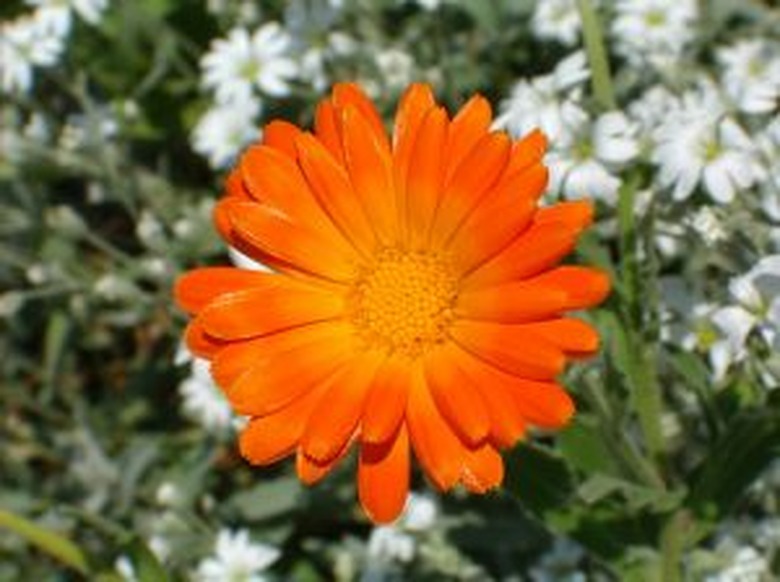How To Prune Gerbera Daisies
Gerbera daisies are prized for their large centers surrounded by 4 inch petals. Available in a range of colors including yellow, red and pink, Gerbera are most often purchased potted–though they can be transplanted outside. The large flowers grow on long, leafless stalks. Powdery mildew is the most common disease of the Gerbera daisy either inside or out, but proper care greatly reduces or eliminates this issue. Keeping your Gerbera daisies properly pruned keeps the plants healthy and may encourage a second blooming period.
Step 1
Separate the foliage and find leaves that are dead, beginning to wither or that appear diseased. Use a sharp knife to cut these leaves 1/8 inch from the base of the plant where they rejoin the stem.
- Gerbera daisies are prized for their large centers surrounded by 4 inch petals.
- Available in a range of colors including yellow, red and pink, Gerbera are most often purchased potted–though they can be transplanted outside.
Step 2
Cut off any withered flowers. Follow the stem down to the base of the plant, and cut off there.
Step 3
Cut blooms at their peak for use in flower arrangements and bouquets. Cut the stem off the plant at a 45-degree angle. Place cut flowers in water immediately to prolong flower life. Cutting flowers for arrangements encourages further blooming.
Step 4
Check the plant at every watering for signs of mildew. Look for a white or blue powdery substance on the soil or leaves. Remove any affected leaves immediately with your knife. Apply a fungicide if the problem persists.
- Cut off any withered flowers.
- Cut blooms at their peak for use in flower arrangements and bouquets.
Step 5
Let leaves wither and die off naturally after the growing season ends in the fall. Cut back all the dead leaves to the ground afterward if desired.
Prune A Gerbera
Florists prize the cut flowers of gerbera daisies (Gerbera jamesonii) for their brilliant splashes of bright color, long cut-stem life and shipping ease. A shallow water reserve slows stem decay, keeping your gerbera fresh and beautiful for a longer period of time. Watch for fading, wilting flowers. This is when seed heads are ready to begin development. Do this before the petals begin to fall off to prevent the plant from developing seeds. Mix a good balanced liquid fertilizer at half strength, and feed your gerbera every two weeks throughout the spring and summer. In the warmer regions of zones 7 through 10, gerberas can overwinter in outdoor gardens safely with adequate protection. Mulch them to a depth of 3 to 4 inches.
- Let leaves wither and die off naturally after the growing season ends in the fall.
- A shallow water reserve slows stem decay, keeping your gerbera fresh and beautiful for a longer period of time.
Things Needed
- Knife
- Fungicide
Warning
Avoid using shears when pruning because this damages the stems.
Tip
Cut Gerbera can survive up to 14 days in a vase. Re-cut the stem, and replace the water every 4 days to prolong the blooms.
References
- University of Hawaii
- Hort Chat
- Cottage Farms Direct: Gerber Daisy
- Arizona State University: Gerbera Jamesonii
- Washington State University Arboretum and Wildlife Conservation Center: The Secret to Long-Lasting Gerbera Daisies
- Home and Garden Ideas: Winterizing Gerbera Daisies
- University of Missouri Extension: Removing Spent Flowers/Deadheading
- Floridata: Gerbera Jamesonii
- OutsidePride: Gerbera Daisy (Gerbera Jamesonii Revolution Vanilla)
- Guide to Houseplants: Gerbera Daisy Care
